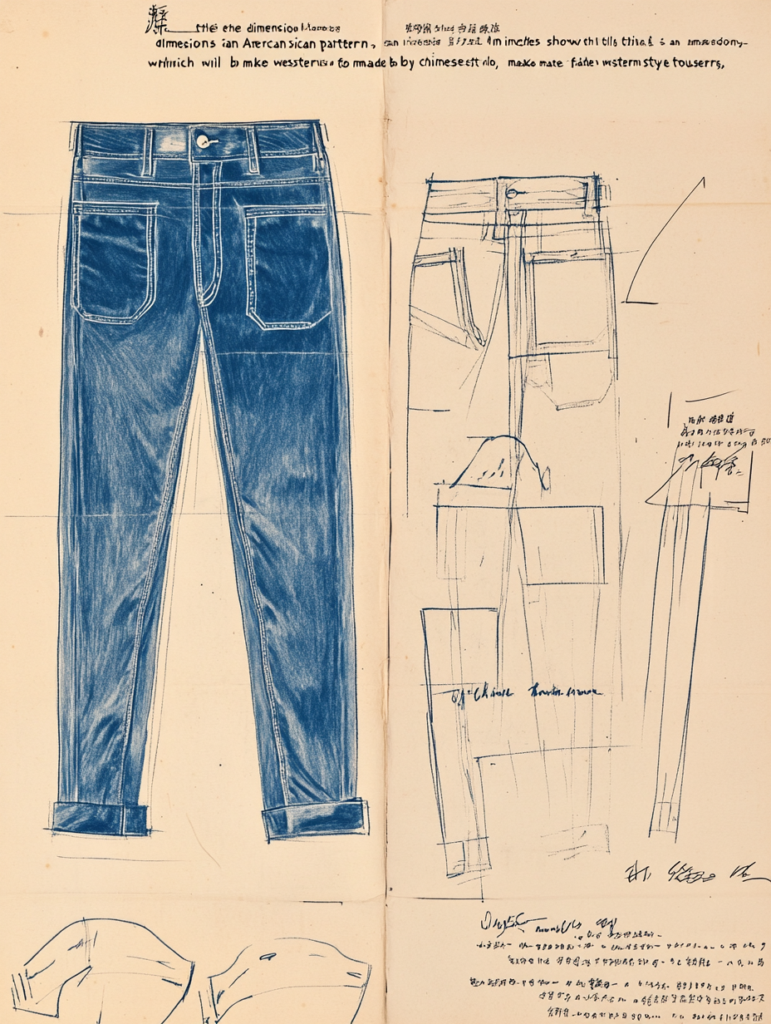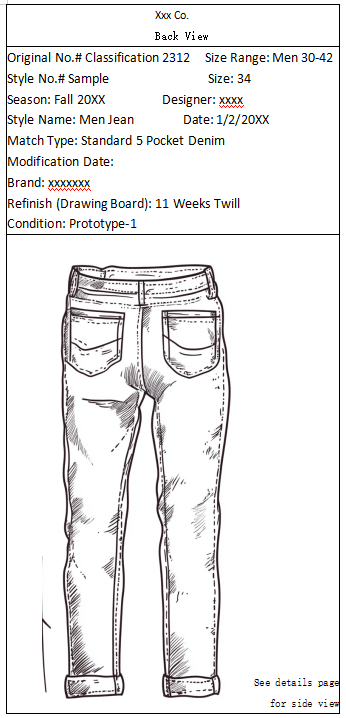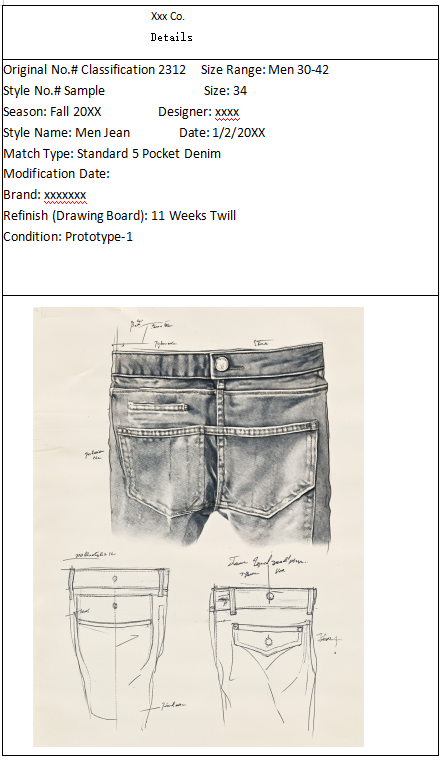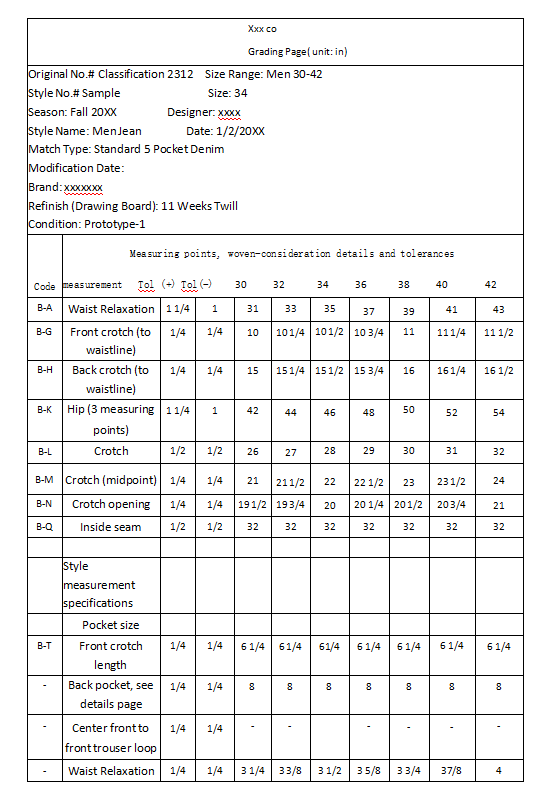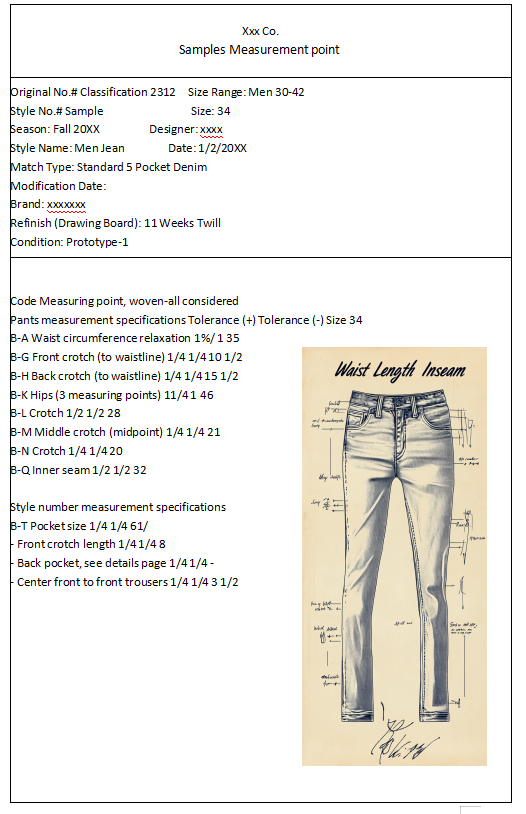
Sample Specifications/Measurement Points: Ensuring Fit and Consistency in Garment Production
The Sample Specifications/Measurement Points section is one of the most important parts of a process sheet. This section provides the garment manufacturer with the exact measurements for each size of the garment and specifies the points on the garment where those measurements should be taken. Properly documenting these details ensures that the garment is produced to the correct size specifications, maintains the designer’s intended fit, and remains consistent across all production runs.
In garment manufacturing, accuracy in measurements is critical to ensuring a well-fitting and comfortable final product. A clear and thorough Sample Specifications/Measurement Points section helps avoid issues such as poor fit, misaligned features, or inconsistency in size grading.
Purpose of the Sample Specifications/Measurement Points Section
The main goal of the Sample Specifications/Measurement Points section is to provide manufacturers with precise information about the garment’s dimensions, ensuring that each piece in production fits within the specified measurements. By defining the exact points where measurements should be taken, this section reduces errors, helps maintain consistency across sizes, and guarantees that the finished garment meets the designer’s vision for fit and comfort.
Key Elements in the Sample Specifications/Measurement Points Section
Size Chart and Grading Information
- A size chart is a table that lists the specific measurements for each size of the garment. This includes the bust, waist, hip, shoulder, inseam, sleeve length, and any other measurements relevant to the garment’s design.
- Grading refers to the process of adjusting a pattern for different sizes, and it’s important to document the grading rules in this section. For example, a designer may indicate that the bust measurement should increase by 1 inch per size, or that the waist should expand by 0.5 inches per size.
Example of a Size Chart:
Size Bust (inches) Waist (inches) Hip (inches) Sleeve Length (inches) XS 32 24 34 22 S 34 26 36 23 M 36 28 38 24 L 38 30 40 25 The size chart must be consistent with the intended fit and design of the garment. It should reflect both ease (the extra room added to the garment for comfort) and fit (how closely the garment follows the body) for each size.
Measurement Points
- The Measurement Points section defines exactly where measurements should be taken on the garment. These points guide the manufacturer in taking accurate measurements, which are essential for achieving the desired fit.
Common measurement points include:
- Bust (Chest): Measured across the fullest part of the chest, typically under the arms. For a shirt or jacket, this measurement is often taken across the front of the garment.
- Waist: Measured around the natural waistline, typically where the body is narrowest. For pants or skirts, this measurement is taken at the waistband.
- Hip: Measured around the fullest part of the hips, usually 8–9 inches below the waist. This is particularly important for pants, skirts, and dresses.
- Shoulder: Measured from the shoulder seam at the neck to the shoulder seam at the arm. This measurement helps define the shoulder fit, especially for blouses, shirts, and jackets.
- Inseam: Measured from the crotch seam to the hem of the pants. This is particularly important for trousers and other lower-body garments.
- Sleeve Length: Measured from the shoulder seam to the wrist (or desired sleeve length). This applies to tops, shirts, and jackets.
- Front Length (or Center Front Length): Measured from the center neck point to the hem. This is especially important for dresses, tunics, and tops.
- Back Length (or Center Back Length): Measured from the center back neck to the hem, this helps define the garment’s overall length.
- Armhole: The circumference of the armhole (where the sleeve attaches to the garment). This is important for ensuring the garment allows for sufficient movement.
- Rise (for pants): Measured from the crotch seam to the top of the waistband. This is essential for defining how the pants fit on the waist and hips.
Visuals: Diagrams or images of the garment with labeled measurement points help eliminate ambiguity and ensure that all parties involved in the production process are aligned on where each measurement should be taken.
Example of measurement points diagram for a shirt:
- Bust measurement would be taken horizontally across the chest.
- Sleeve length would be measured from the shoulder seam to the wrist.
- Waist measurement is taken at the natural waistline.
- Tolerance Levels
- Tolerance levels are an important part of the Sample Specifications/Measurement Points section. These are the acceptable range of deviation for each measurement. For example, a bust measurement might be allowed to deviate by ±0.5 inches, meaning the garment can be 0.5 inches larger or smaller than the specified measurement and still be considered acceptable.
- Fit-sensitive measurements (like waist, bust, or inseam) may have stricter tolerances (±0.25 to ±0.5 inches).
- Non-fit sensitive measurements (like sleeve length or overall garment length) might have a slightly larger tolerance range (±0.75 to ±1 inch).
- Grade Rule Adjustments
- Grade rules are used to explain how the garment pattern will change to accommodate different sizes. For example, if the bust measurement increases by 1 inch per size, the designer might note that the sleeve length increases by 0.5 inches per size to maintain proportional balance.
- The Sample Specifications/Measurement Points section outlines how these grading adjustments should be made for each size. This helps maintain the proportions and ensures that all sizes fit well and look balanced.
- XS to S: Increase bust by 1 inch, waist by 0.5 inches, and hip by 1 inch.
- S to M: Increase bust by 1 inch, waist by 0.5 inches, and hip by 1 inch.
- Fit Comments and Adjustments
- In addition to the size chart and measurement points, this section may include fit comments from previous fittings or sample evaluations. These comments provide additional guidance on how the garment should fit and any adjustments needed to achieve the perfect fit across all sizes.
